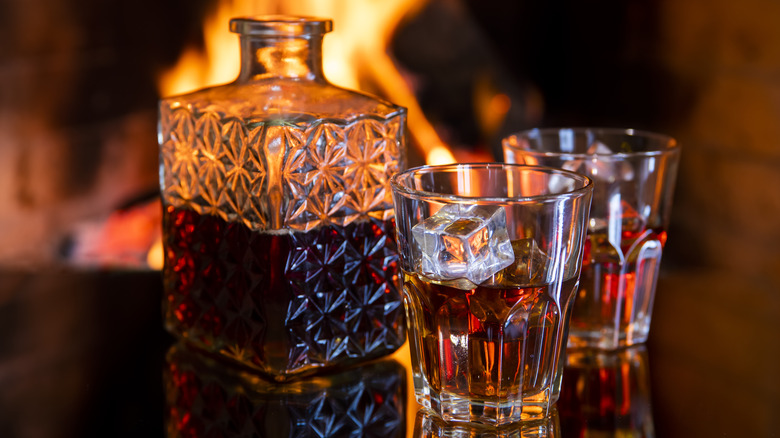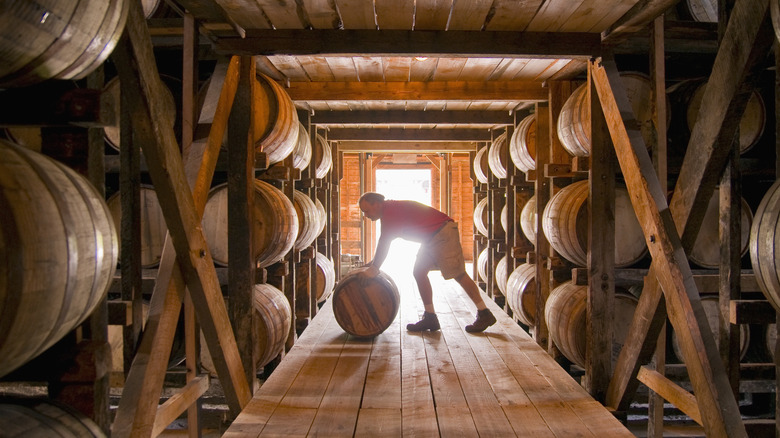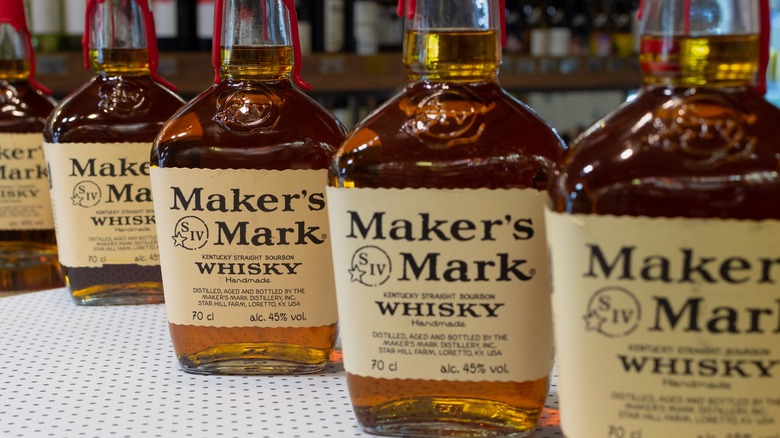When North Carolina Was The Bourbon Capital Of America
Any bourbon lover will know a great bourbon from the ones that aren't worth buying, and they'll certainly slobber over a high-quality brew made in Kentucky. Over 95% of the world's bourbon comes from this state, making it the bourbon capital of the world — although it's not the U.S. state that drinks the most alcohol. But had the turn of events been slightly different, the bourbon-making crown might have belonged to someone else. North Carolina has a storied past when it comes to bourbon, one peppered with peaks and valleys. The state once produced more bourbon than any other in the country. This was until its distilleries were outlawed 11 years before prohibition in 1909, making North Carolina the first state to enact the drinking law.
Before 1909, North Carolina was one of the country's most prolific distillers, home to more than 400 operating distilleries, though the world's oldest operating bourbon distillery, Maker's Mark, is in Kentucky. It was only in 2005 that North Carolina's first legal distillery producing authentic moonshine, Piedmont Distillers, opened up, restarting North Carolina's journey as a brewing state.
North Carolina had the perfect recipe for bourbon
The sweet, oaky recipe for bourbon initially came to North Carolina and Kentucky when an influx of settlers from Scotland, Germany, and Ireland started arriving in the 1700s in search of better economic opportunities. With them, came a big barrel of knowledge about whiskey distilling. This knowledge was infused with North Carolina's perfect geographical conditions for making high-quality whiskey or whisky — the "skey" only applies to Irish whiskeys. Like Kentucky, North Carolina had limestone deposits and, hence, access to limestone water – bourbon connoisseurs believe it isn't bourbon unless it's made with limestone water.
The state also had an edge in terms of climate, because even though Kentucky has the perfect weather conditions for distillation, the seasons in North Carolina are believed to be more consistent for aging bourbon. Corn was another factor. Bourbon typically contains at least 51% corn and North Carolina has historically been a major corn producer. The state had just the right ingredients to brew up some good, smoky bourbon.
Why North Carolina couldn't become a bourbon state
While North Carolina initially dominated bourbon production, the long period before and after prohibition put the state in the back seat. Its refusal to ratify the repeal of the 21st Amendment in 1933, which allowed each state to control liquor sales, further solidified Kentucky's hold on bourbon production. This hold peaked in the '60s due to the growing popularity of bourbon, especially after the U.S. Congress officially recognized it as a "distinctive product of the United States" in 1964. This was until the '70s disco era, when tequila and vodka took over as the preferred liquor of choice, and bourbon became an "uncool" drink.
Because it was the only state producing bourbon around that time, the spirit came to be associated almost exclusively with Kentucky. In contrast, North Carolina only legalized liquor production in 1979. By then, Kentucky had peaked as the leading exporter of bourbon, a position it continues to hold today (in 2023, the bourbon industry in Kentucky generated over $9 billion). During Kentucky's unstoppable reign as the bourbon state, North Carolina's deep connection with the spirit became a faded memory.


